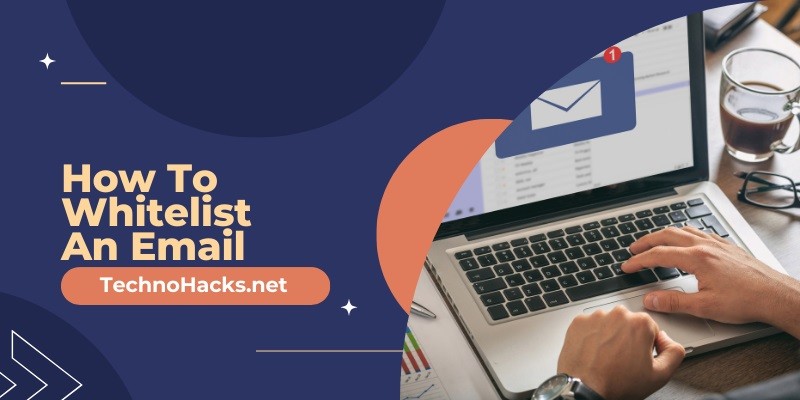How To Whitelist An Email?
Email marketing remains a crucial channel for businesses to connect with their audience, but ensuring your messages reach subscribers’ inboxes can be challenging. With increasingly sophisticated spam filters and crowded inboxes, email whitelisting has become an essential practice for marketers. This article explores the concept of email whitelisting and provides actionable best practices to improve your email deliverability and engagement.
What is Email Whitelisting?
Email whitelisting is the process of adding an email address or domain to a list of approved senders. When a recipient whitelists an email address, they’re telling their email service provider (ESP) that they trust the sender and want to receive messages from them. This ensures that emails from whitelisted senders bypass spam filters and land directly in the recipient’s inbox.
The Importance of Email Whitelisting
Whitelisting offers several benefits for both email marketers and subscribers:
- Improved deliverability: Whitelisted emails are more likely to reach the inbox, increasing the chances of your messages being seen and read.
- Enhanced sender reputation: Being whitelisted signals to ESPs that you’re a trusted sender, which can positively impact your overall sender reputation.
- Higher engagement rates: When your emails consistently reach the inbox, you’re more likely to see improved open rates, click-through rates, and overall engagement.
- Reduced risk of missing important communications: For subscribers, whitelisting ensures they don’t miss crucial updates or offers from brands they care about.
Email Whitelisting Best Practices for Marketers
To maximize the benefits of email whitelisting, consider implementing these best practices:
Use a Legitimate Domain Name
Using a legitimate and recognizable domain name is crucial for building trust with your subscribers. According to a study by Litmus, 42% of email recipients decide whether to open an email based on the sender’s name and email address. Choose a domain that clearly represents your brand and dedicate it solely to email communication. This consistency helps subscribers identify your emails and makes them more likely to whitelist your address.
Ask Subscribers to Add You as a Contact
One of the most straightforward ways to encourage whitelisting is to ask subscribers to add your email address to their contacts. Emails from saved contacts are often whitelisted by default in many email clients. Include this request in your welcome emails, email footers, or even as a dedicated message to your subscribers.
For example, The Hustle, a popular business newsletter, sends a specific email to new subscribers asking them to add their addresses to contacts. Similarly, brands like SharkNinja include whitelisting instructions in their email footers.
Provide Clear Whitelisting Instructions
Different email clients have varying processes for whitelisting. Make it easy for your subscribers by providing step-by-step instructions for popular email services like Gmail, Outlook, Yahoo, and Apple Mail. You can include these instructions in your welcome emails or create a dedicated landing page with whitelisting guides.
For instance, Campaign Monitor offers a comprehensive guide for whitelisting across various email clients, which marketers can link to in their emails.
Segment Your Email List
Segmentation is a powerful tool for improving email relevance and engagement. By sending targeted content to specific subscriber groups, you increase the likelihood of your emails being opened and engaged with, which in turn can lead to more subscribers whitelisting your address. According to a study by Mailchimp, segmented email campaigns have 14.31% higher open rates than non-segmented campaigns.
Maintain Consistent Sending Frequency
Establishing a consistent sending schedule helps set expectations for your subscribers. When recipients know when to expect your emails, they’re more likely to look for and engage with them. This consistency can lead to improved open rates and a higher likelihood of being whitelisted.
Optimize Your Email Content
Create valuable, relevant content that your subscribers want to receive. High-quality content encourages engagement and reduces the chances of your emails being marked as spam. Use personalization, clear and compelling subject lines, and mobile-responsive designs to improve the overall user experience.
Implement Double Opt-in
Using a double opt-in process for new subscribers can help ensure that your email list consists of engaged and interested recipients. This method requires new subscribers to confirm their email addresses before being added to your list, reducing the risk of invalid addresses and improving overall list quality.
Monitor Your Sender Reputation
Regularly check your sender reputation using tools like SenderScore or Google Postmaster Tools. A good sender reputation increases the likelihood of your emails being delivered to the inbox and makes it easier for subscribers to whitelist your address.
Use Authentication Protocols
Implement email authentication protocols like SPF, DKIM, and DMARC. These protocols help verify that your emails are legitimate and not spoofed, increasing trust with both ESPs and recipients.
Regularly Clean Your Email List
Maintain a healthy email list by regularly removing inactive subscribers and bounced email addresses. A clean list improves your overall deliverability and engagement rates, which can positively impact your ability to reach the inbox and encourage whitelisting.
Conclusion
Email whitelisting is a powerful tool for improving email deliverability and engagement. By implementing these best practices, marketers can increase the chances of their emails reaching subscribers’ inboxes and build stronger relationships with their audience. Remember that whitelisting is just one part of a comprehensive email marketing strategy. Combine these practices with high-quality content, proper list management, and adherence to email marketing regulations to achieve the best results.

